
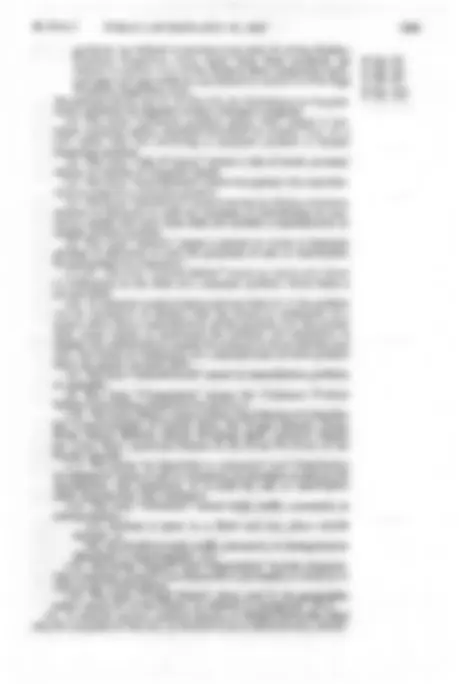
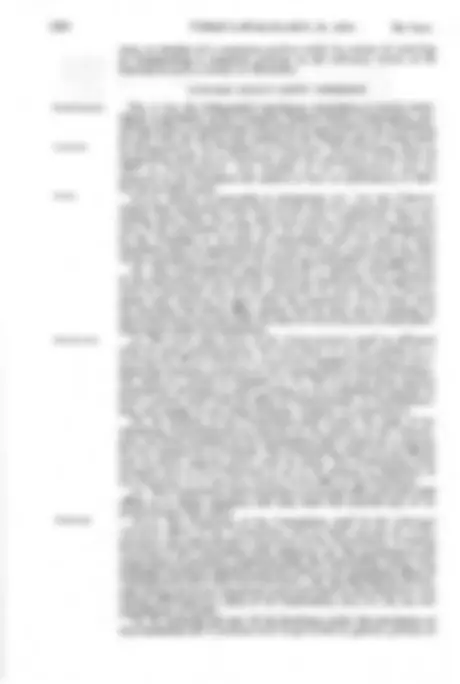
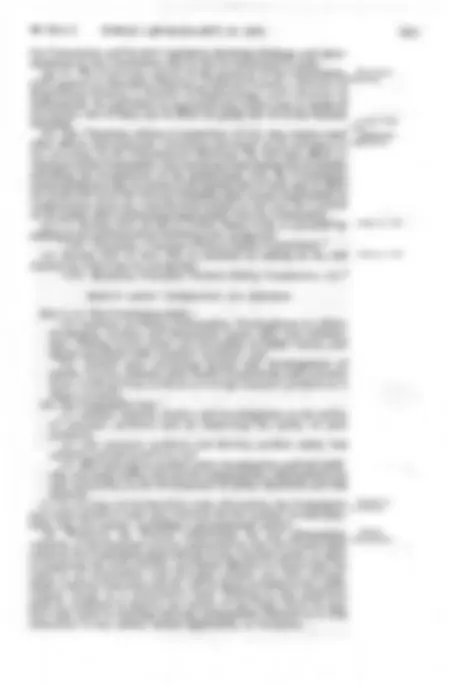
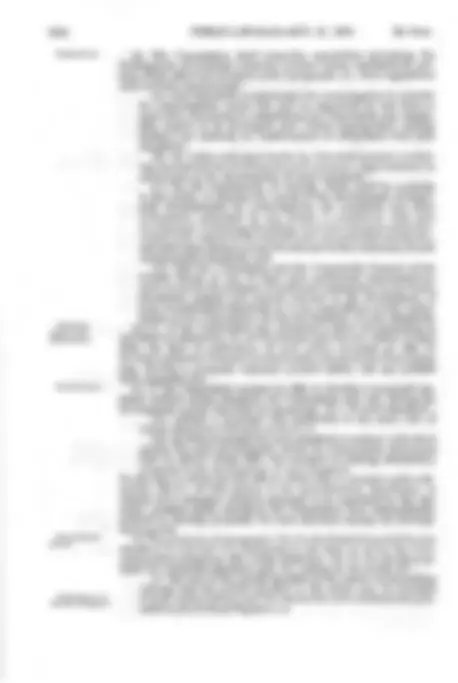
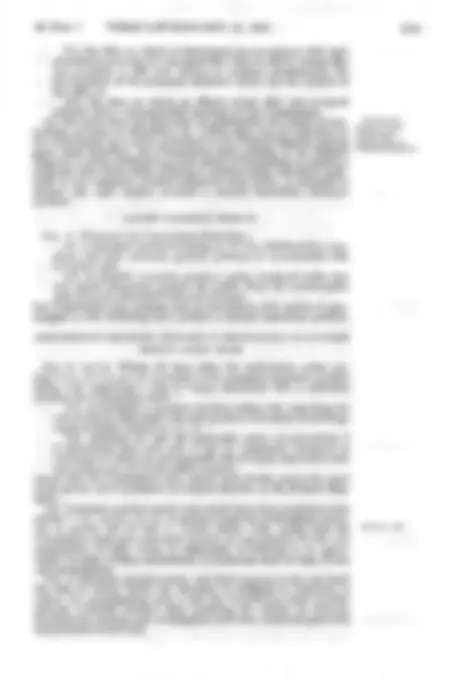
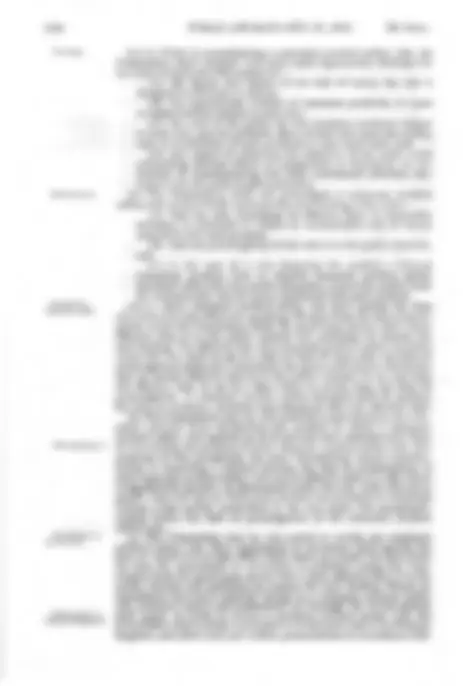
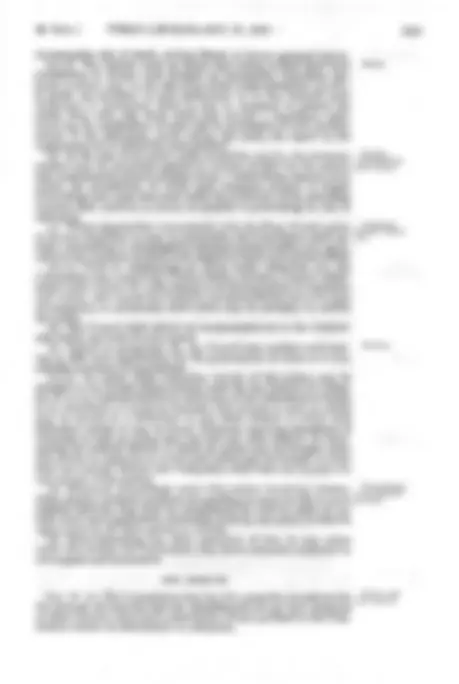
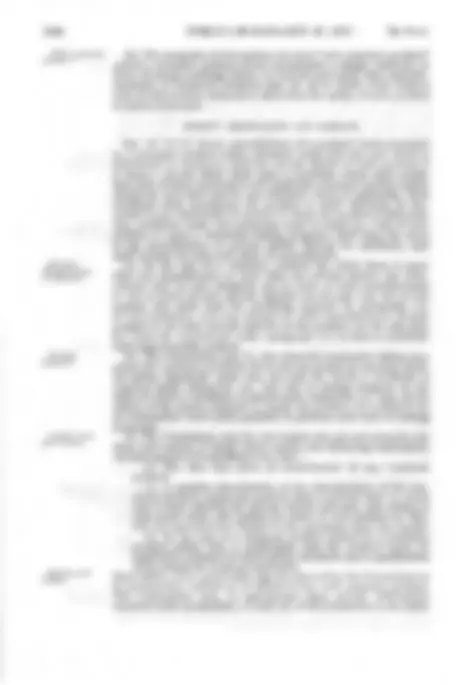
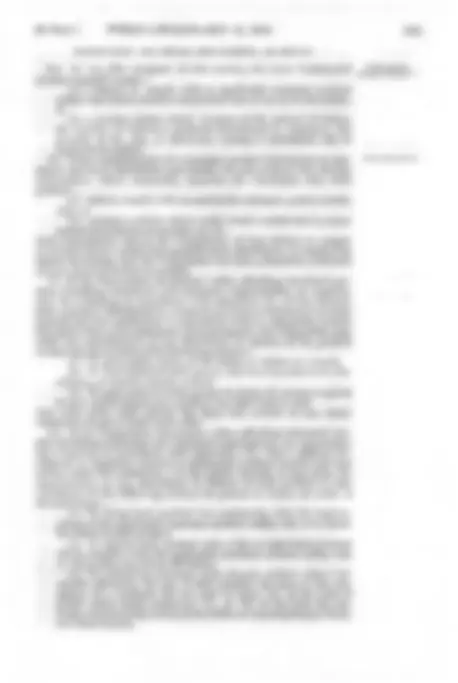

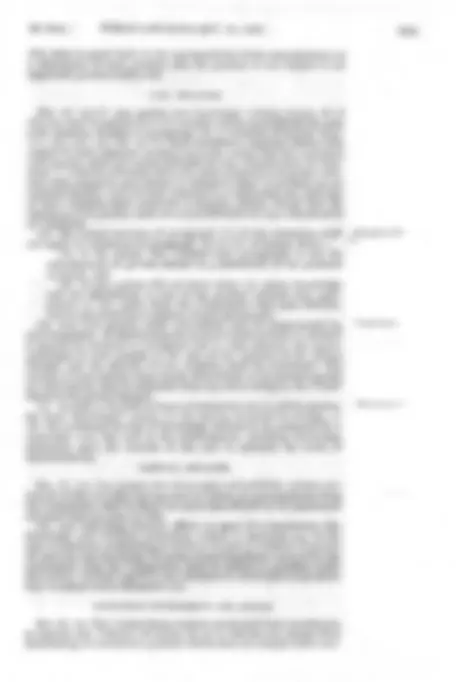

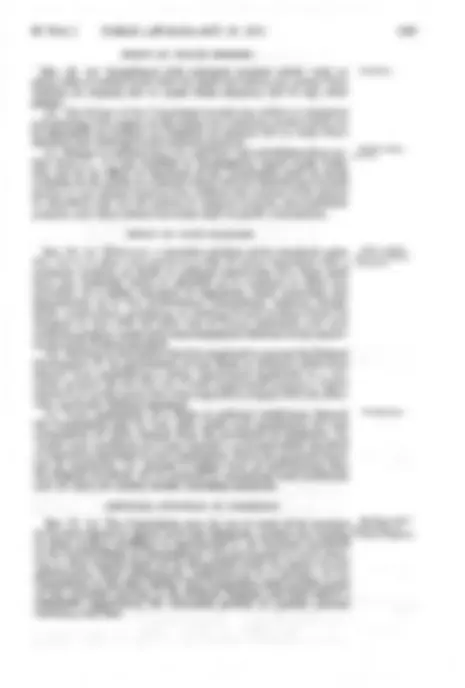
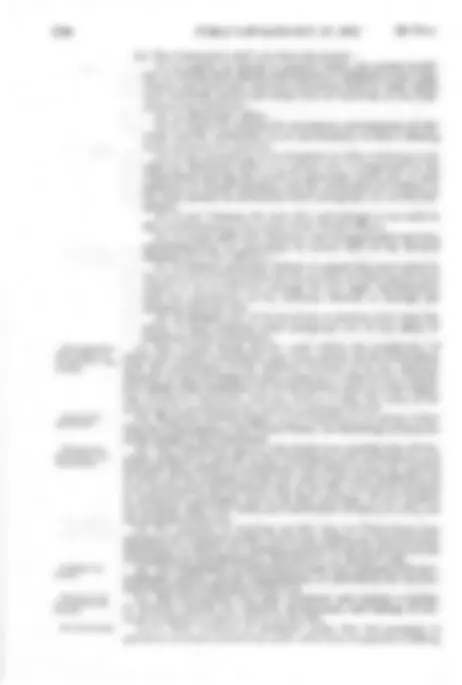
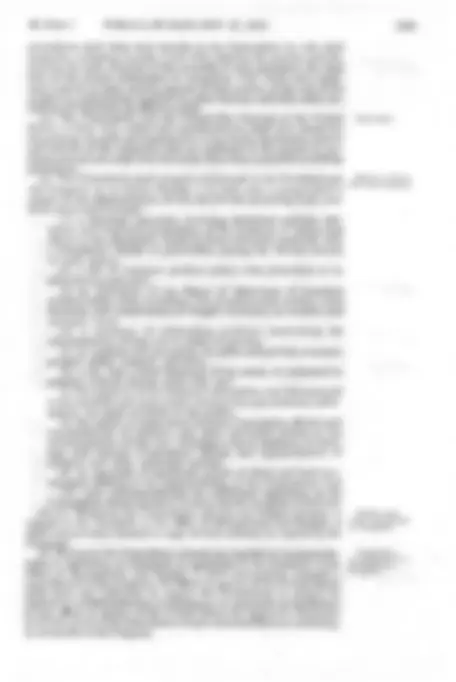
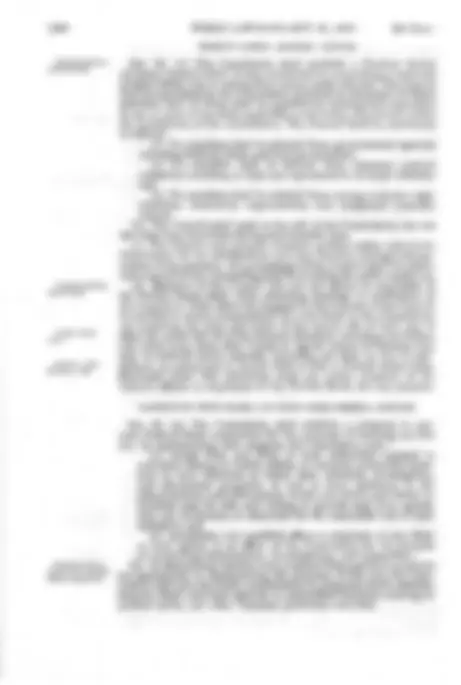
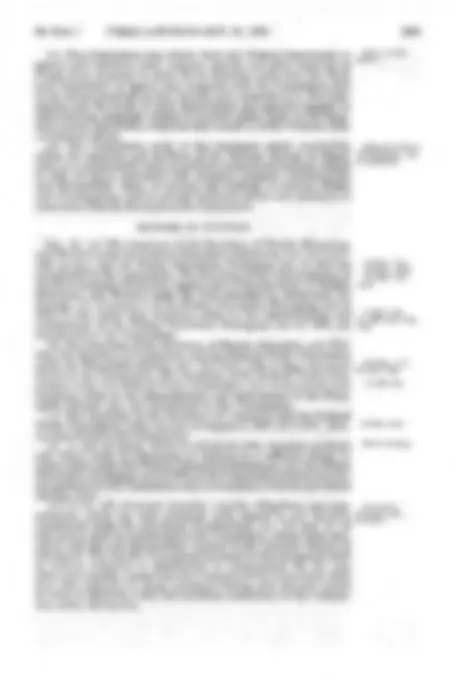
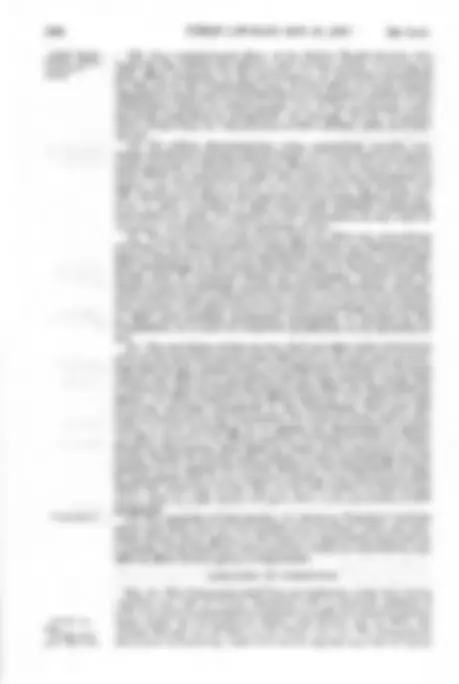
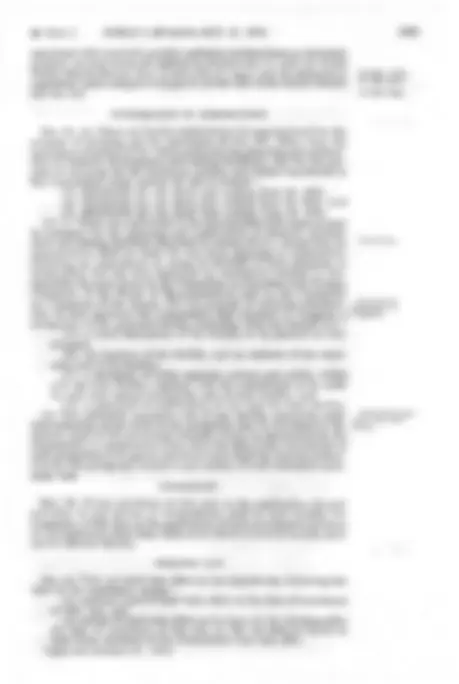


Study with the several resources on Docsity

Earn points by helping other students or get them with a premium plan


Prepare for your exams
Study with the several resources on Docsity

Earn points to download
Earn points by helping other students or get them with a premium plan
Community
Ask the community for help and clear up your study doubts
Discover the best universities in your country according to Docsity users
Free resources
Download our free guides on studying techniques, anxiety management strategies, and thesis advice from Docsity tutors
The Consumer Product Safety Act, which grants the Commission the authority to regulate and ensure the safety of consumer products. The Act requires the Commission to notify manufacturers and provide a summary of information to them before public disclosure, prohibits the development of new standards during the development period of an accepted offer, and allows for the declaration of imminently hazardous consumer products. The Act also requires manufacturers, distributors, and retailers to inform the Commission of any product that fails to comply with an applicable consumer product safety rule or contains a defect that could create a substantial product hazard.
What you will learn
Typology: Lecture notes
1 / 27

This page cannot be seen from the preview
Don't miss anything!




















A N A C T October 2 7, 1972 To protect consumers against unreasonable risk of injury from hazardous 1^^-^^^^^ products, and for other purposes. ~
' ^ ' Product Safety Act. SHORT T I T L E ; TABLE O F CONTENTS
TABLE OF CONTENTS Sec. 1. Short title; table of contents. Sec. 2. Findings and purposes. Sec. 3. Definitions. Sec. 4. Consumer Product Safety Commission. Sec. 5. Product safety information and research. Sec. 6. Public disclosure of information. Sec. 7. Consumer product safety standards. Sec. 8. Banned hazardous products. Sec. 9. Administrative procedure applicable to promulgation of consumer product safety rules. Sec. 10. Commission responsibility—petition for consumer product safety rule. Sec. 11. Judicial review of consumer product safety rules. Sec. 12. Imminent hazards. Sec. 13. New products. Sec. 14. Product certification and labeling. Sec. 15. Notification and repair, replacement, or refund. Sec. 16. Inspection and recordkeeping. Sec. 17. Imported products. Sec. 18. Exports. Sec. 19. Prohibited acts. Sec. 20. Civil penalties. Sec. 21. Criminal penalties. Sec. 22. Injunctive enforcement and seizure. Sec. 23. Suits for damages by persons injured. Sec. 24. Private enforcement of product safety rules and of section 15 orders. Sec. 25. Effect on private remedies. Sec. 26. Effect on State standards. Sec. 27. Additional functions of Commission. Sec. 28. Product Safety Advisory Council. Sec. 29. Cooperation with States and with other Federal agencies. Sec. 30. Transfers of functions. Sec. 31. Limitation on jurisdiction. Sec. 32. Authorization of appropriations. Sec. 33. Separability.. " • Sec. 34. Effective date.
F I N D I N G S A N D PURPOSES C j '.
82-081 O - 73 - 79
(6) regulation of consumer products the distribution or use of which affects interstate or foreign commerce is necessary to carry out this Act. (b) The purposes of this Act are— (1) to protect the public against unreasonable risks of injury associated with consumer products; (2) to assist consumers in evaluating the comparative safety of consumer products; (3) to develop uniform safety standards for consumer products and to minimize conflicting State and local regulations; and (4) to promote research and investigation into the causes and prevention of product-related deaths, illnesses, and injuries.
DEFINITIONS
SEC. 3. (a) F o r purposes of this Act: (1) The term "consumer product" means any article, or com- ponent part thereof, produced or distributed (i) for sale to a consumer for use in or around a permanent or temporary house- hold or residence, a school, in recreation, or otherwise, or (ii) for the personal use, consumption or enjoyment of a consumer m or around a permanent or temporary liousehold or residence, a school, in recreation, or otherwise; but such term does not include— (A) any article which is not customarily produced or dis- tributed for sale to, or use or consumption by, or enjoyment of, a consumer, (B) tobacco and tobacco products, (C) motor vehicles or motor vehicle equipment (as defined bv sections 102 (3) and (4) of the National Traffic and Motor 80 Stat. 718; VeMcle Safety Act of 1966), ^5usc U91. (D) economic poisons (as defined .by the Federal Insecti- Ante, p. 973. cide, Fuugicide, and Rodenticide Act), ( E ) any article which, if sold by the manufacturer, pro- ducer, or importer, would be subject to the tax imposed by 68A Stat. 490. sectiou 4181 of the Internal Revenue Code of 1954 (deter- 26 use 4181. mined without regard to any exemptions from such tax pro- 72 Stat. 1282. vided by section 4182 or 4221, or any other provision of such Code), or any component of any such article, ( F ) aircraft, aircraft engines, propellers, or appliances (as 72 Stat. 737. defined in section 101 of the Federal Aviation Act of 1958), (G) boats which could be subjected to safety regulation under the Federal Boat Safety Act of 1971 (46 U.S.C. 1451 85 Stat. 213. gt scq.); vessels, and appurtenances to vessels (other than such boats), which could be subjected to safety regulation 46 use 361. under title 52 of the Revised Statutes or other marine safety statutes administered by the department in which the Coast Guard is operating; and equipment (including associated equipment, as defined in section 3(8) of the Federal Boat 46 use 1452. Safety Act of 1971) to the extent that a risk of injury asso- ciated with the use of such equipment on boats or vessels could be eliminated or reduced by actions taken under any statute referred to in this subparagraph, (H) drugs, devices, or cosmetics (as such terms are defined in sections 201 ( g ) , ( h ) , and (i) of the Federal Food, Drug, 79"tal°234°*°' and Cosmetic Act), or 21 use 321. (I) food. The term "food", as used in this subparagraph means all "food", as defined in section 201 (f) of the Federal Food, Drug, and Cosmetic Act, including poultry and poultry
iitor, or retailer of a consumer product solely by reason of receiving or transporting a consumer product in the ordinary course of its business as such a carrier or forwarder.
Establishment.
Chairman.
Terms.
Restrictions.
Functions.
CONSUMER PRODUCT SAFETY COMMISSION
SEC. 4. (a) An independent regulatory commission is hereby estab- lished, to be known as the Consumer Product Safety Commission, con- sisting of five Commissioners who shall be appointed by the President, by and with the advice and consent of the Senate, one of whom shall be designated by the President as Chairman. The Chairman, when so designated, shall act as Chairman until the expiration of his term of office as Commissioner. Any member of the Commission may be removed by the President for neglect of duty or malfeasance in office but for no other cause. (b)(1) Except as provided in paragraph (2), (A) the Commis- sioners first appointed under this section shall be appointed for terms ending three, four, five, sixj and seven years, respectively, after the date of the enactment of this Act, the term of each to be designated by the President at the time of nomination; and (B) each of their successors shall be appointed for a term of seven years from the date of the expiration of the term for which his predecessor was appointed. (2) Any Commissioner appointed to fill a vacancy occurring prior to the expiration of the term for which his predecessor was appointed shall be appointed only for the remainder of such term. A Commis- sioner may continue to serve after the expiration of his term until his successor has taken office, except that he maj^ not so continue to serve more than one year after the date on which his term would other- wise expire under this subsection. (c) Not more than three of the Commissioners shall be affiliated with the same political party. No individual (1) in the employ of, or holding any official relation to, any person engaged in selling or manu- facturing consumer products, or (2) owning stock or bonds of substan- tial value in a person so engaged, or (3) who is in any other manner pecuniarily interested in such a person, or in a substantial supplier of such a person, shall hold the office of Commissioner. A Commissioner may not engage in any other business, vocation, or employment. (d) No vacancy in the Commission shall impair the right of the remaining Commissioners to exercise all the powers of the Commis- sion, but three members of the Commission shall constitute a quorum for the transaction of business. The Commission shall have an official seal of which judicial notice shall be taken. The Commission shall annually elect a Vice Chairman to act in the absence or disability of the Chairman or in case of a vacancy in the office of the Chairman. (e) The Commission shall maintain a principal office and such field offices as it deems necessary and may meet and exercise any of its powers at any other place. (f)(1) The Chairman of the Commission shaU be the principal executive officer of the Commission, and he shall exercise all of the executive and administrative functions of the Commission, including functions of the Commission with respect to (A) the appointment and supervision of personnel employed under the Commission (other than personnel employed regularly and full time in the immediate offices of commissioners other than the Chairman), (B) the distribution of busi- ness among personnel appointed and supervised by the Chairman and among administrative units of the Commission, and (C) the use and expenditure of funds. (2) I n carrying out any of his functions under the provisions of this subsection the Chairman shall be governed by general policies of
the Commission and by such regulatory decisions, findings, and deter- minations as the Commission may by law be authorized to make. (g) (1) The Chairman, subject to the approval of the Commission, oi^^^^J'"''* shall appoint an Executive Director, a General Counsel, a Director of Engineering Sciences, a Director of Epidemiology, and a Director of Information. No individual so appointed may receive pay in excess of the annual rate of basic pay in effect for grade GS-18 of the General S c h e d u l e. n o t e ' " ' ' ' " ' ' (2) The Chairman, subject to subsection (f) (2), may employ such Additional other officers and employees (including attorneys) as are necessary in employees- the execution of the Commission's functions. No full-time officer or employee of the Commission who was at any time during the 12 months preceding the termination of his employment with the Commission compensated at a rate in excess of the annual rate of basic pay in effect for grade GS-14 of the General Schedule, shall accept employment or compensation from any manufacturer subject to this Act, for a period of 12 months after terminating employment with the Commission. (h) (1) Section 5314 of title 5, United States Code, is amended by adding at the end thereof the following new paragraph: "(59) Chairman, Consumer Product Safety Commission." (2) Section 5315 of such title is amended by adding at the end thereof the following new paragraph: "(97) Members, Consumer Product Safety Commission ( 4 ). "
Ante. p. 110.
Ante, p. 149.
PRODUCT SAFETY INFORMATION AND RESEARCH
SEC. 5. (a) The Commission shall— (1) maintain an Injury Information Clearinghouse to collect, investigate, analyze, and disseminate injury data, and informa- tion, relating to the causes and prevention of death, injury, and illness associated with consumer products; and
Grants or contracts.
(1) Requirements as to performance, composition, contents, design, construction, finish, or packaging of a consumer product. (2) Requirements that a consumer product be marked with or accompanied by clear and adequate w a r n i n g or instructions, or requirements respecting the form of warnings or instructions. Any requirement of such a standard shall be reasonably necessary to prevent or reduce an unreasonable risk of injury associated with such product. The requirements of such a standard (other than require- ments relating to labeling, warnings, or instructions) shall, whenever feasible, be expressed in terms of performance requirements. (b) A proceeding for the development of a consumer product safety standard under this Act shall be commenced by the publication in the Federal Register of a notice which shall— (1) identify the product and the nature of the risk of injury associated with the product ; (2) state the Commission's determination that a consumer product safety standard is necessary to eliminate or reduce the risk of injury; (3) include information with respect to any existing standard known to the Commission which may be relevant to the proceed- ing; and (4) include an invitation for any person, including any State or Federal agency (other than the Commission), within 30 days after the date of publication of the notice (A) to submit to the Commission an existing standard as the proposed consumer prod- uct safety standard or (B) to offer to develop the proposed con- sumer product safety standard. An invitation under paragraph (4) (B) shall specify a period of time, during which the standard is to be developed, which shall be a period ending 150 days after the publication of the notice, unless the Com- mission for good cause finds (and includes such finding in the notice) that a different period is appropriate. (c) If the Commission determines that (1) there exists a standard which has been issued or adopted by any Federal agency or by any other qualified agency, organization, or institution, and (2) such stand- ard if promulgated under this Act, would eliminate or reduce the unreasonable risk of iniury associated with the product, then it may, in lieu of accepting an offer pursuant to subsection (d) of this section, publish such standard as a proposed consumer product safety rule. (d) (1) Except as provided by subsection (c), the Commission shall accept one, and may accept more than one, offer to develop a proposed consumer prorduct safety standard pursuant to the invitation prescribed by subsection (b) (4) ( B ) , if it determines that the offeror is technically competent, is likely to develop an appropriate standard within the period specified in the invitation under subsection (b), and will com- ply with regulations of the Commission under paragraph (3) of this subsection. The Commission shall publisli in the Federal Register the name and address of each person whose offer it accepts, and a summary of the terms of such offer as accepted. (2) If an offer is accepted under this subsection, the Commission may agree to contribute to the offeror's cost in developing a proposed consumer product safety standard, in any case in which the Commis- sion determines that such contribution is likely to result in a more satisfactory standard than would be developed without such contribu- tion, and that the offeror is financially responsible. Regulations of the Commission shall set forth the items of cost in which it may par- ticipate, and shall exclude any contribution to the acquisition of land or buildings.
Notice, publication in Federal Register.
Development period.
Proposed safety rules, publication.
Proposed standards, development offers.
Publication in Federal Register.
Cost, contribution.
Regulations.
Proposed safety rule, publication.
Restrictions.
Development period.
Publication in Federal Register.
(3) The Commission shall prescribe regulations governing the development of proposed consumer product safety standards by per- sons whose offers are accepted under paragraph (1). Such regulations shall include requirements— (A) that standards recommended for promulgation be suitable for promulgation under this Act, be supported by test data or such other documents or materials as the Commission may reason- ably require to be developed, and (where appropriate) contain suitable test methods for measurement of compliance with such standards; (B) for notice and opportunity by interested persons (includ- ing representatives of consumers and consumer organizations) to participate in the development of such standards; (C) for the maintenance of records, which shall be available to the public, to disclose the course of the development of stand- ards recommended for promulgation, the comments and other information submitted by any person in connection with such development (including dissenting views and comments and infor- mation with respect to the need for such recommended standards), and such other matters as may be relevant to the evaluation of such recommended standards; and (D) that the Commission and the Comptroller General of the United States, or any of their duly authorized representatives, have access for the purpose of audit and examination to any books, documents, papers, and records relevant to the development of such recommended standards or to the expenditure of any contri- bution of the Commission for the development of such standards. (e^ (1) If the Commission has published a notice of proceeding as provided by subsection (b) of this section and has not, within 30 days after the date of publication of such notice, accepted an offer to develop a proposed consumer product safety standard, the Commission may develop a proposed consumer product safety rule and publish such proposed rule. (2) If the Commission accepts an offer to develop a proposed con- sumer product safety standard, the Commission may not, during the development period (specified in paragraph (3)) for such standard— (A) publish a proposed rule applicable to the same risk of injury associated with such product, or (B) develop proposals for such standard or contract with third parties for such development, unless the Commission determines that no offeror whose offer was accepted is making satisfactory progress in the development of such standard. I n any case in which the sole offeror whose offer is accepted under sub- section (d) (1) of this section is the manufacturer, distributor, or retailer of a consumer product proposed to be regulated by the con- sumer product safety standard, the Commission may independently proceed to develop proposals for such standard during the develop- ment period. (3) For purposes of paragraph (2), the development period for any standard is a period (A) beginning on the date on which the Com- mission first accepts an offer under subsection (d) (1) for the develop- ment of a proposed standard, and (B) ending on the earlier of— (i) the end of the period specified in the notice of proceeding (except that the period specified in the notice may be extended if good cause is shown and the reasons for such extension are pub- lished in the Federal Register), or
Findings.
Restrictions.
Standards, effective date.
•Stockpiling.
Amendment or revocation.
Publication in Federal Register.
(c) (1) Prior to promulgating a consumer product safety rule, the Commission shall consider, and shall make appropriate findings for inclusion in such rule with respect to— (A) the degree and nature of the risk of injury the rule is designed to eliminate or reduce; (B) the approximate number of consumer products, or types or classes thereof, subject to such rule; (C) the need of the public for the consumer products subject to such rule, and the probable effect of such rule upon the utility, cost, or availability of such products to meet such need; and (D) any means of achieving the objective of the order while minimizing adverse effects on competition or disruption or dis- location of manufacturing and other commercial practices con- sistent with the public health and safety. (2) The Commission shall not promulgate a consumer product safety rule unless it finds (and includes such finding in the rule)— (A) that the rule (including its effective date) is reasonably necessary to eliminate or reduce an unreasonable risk of injury associated with such product; (B) that the promulgation of the rule is in the public interest; and (C) in the case of a rule declaring the product a banned hazardous product, that no feasible consumer product safety standard under this Act would adequately protect the public from the unreasonable risk of injury associated with such product. (d) (1) Each <jonsumer product safety rule shall specify the date such rule is to take effect not exceeding 180 days from the date promul- gated, unless the Commission finds, for good cause shown, that a later effective date is in the public interest and publishes its reasons for such finding. The effective date of a consumer product safety stnndard under this Act shall be set at a date at least 30 days after the date of promulgation unless the Commission for good cause shown determines that an earlier effective date is in the public interest. I n no case may the effective date be set at a date which is earlier than the date of promulgation. A consumer product safety standard shall be applica- ble only to consumer products manufactured after the effective date. (2) The Commission may by rule prohibit a manufacturer of a con- sumer product from stockpiling any product to which a consumer product safety rule applies, so as to prevent such manufacturer from circumventing the purpose of such consumer product safety rule. F o r purposes of this paragraph, the term "stockpiling" means manufac- turing or importing a product between the date of promulgation of such consumer pro(mct safety rule and its effective date at a rate which is significantly greater (as determined under the rule under this para- graph) than the rate at which such product was produced or imported durmg a base period (prescribed in the rule under this paragraph) ending before the date of promulgation of the consumer product safety rule. (e) The Commission may by rule amend or revoke any consumer product safety rule. Such amendment or revocation shall specify the date on which it is to take effect which shall not exceed 180 days from the date the amendment or revocation is published unless the Com- mission finds for good cause shown that a later effective date is in the public interest and publishes its reasons for such finding. Where an amendment involves a material change in a consumer product safety rule, sections 7 and 8, and subsections (a) through (d) of this section shall apply. I n order to revoke a consumer product safety rule, the Commission shall publish a proposal to revoke such rule in the Federal Register, and allow oral and written presentations in accordance with
COMMISSION RESPONSIBILITY—PETITION FOR CONSUMER PRODUCT SAFETY RULE
\ '. ,. •• "^ f 'Ft • J • 1 , investigation.
unreasonable risk of death, serious illness, or severe personal injury. (b) (1) The district court in which such action is filed shall have Relief. jurisdiction to declare such product an imminently hazardous con- sumer product, and (in the case of an action under subsection (a) (2)) to grant (as ancillary to such declaration or in lieu thereof) such temporary or permanent relief as may be necessary to protect the public from such risk. Such relief may include a mandatory order requiring the notification of such risk to purchasers of such product known to the defendant, public notice, the recall, the repair or the replacement of, or refund for, such product. (2) I n the case of an action under subsection (a) (1), the consumer condel^nition product may be proceeded against by process of libel for the seizure and seizure"" and condemnation of such product in any United States district court within the jurisdiction of which such consumer product is found. Proceedings and cases instituted under the authority of the preceding sentence shall conform as nearly as possible to proceedings in rem in admiralty. (c) Where appropriate, concurrently with the filing of such action J^^c^'^aLt or as soon thereafter as may be practicable, the Commission shall ini- rule. tiate a proceeding to promulgate a consumer product safety rule appli- cable to the consumer product with respect to which such action is filed. ( d ) ( 1 ) Prior to commencing an action under subsection ( a ) , the , .^1?"/... Commission may consult the Product Safety Advisory Council (estab- lished under section 28) with respect to its determination to commence such action, and request the Council's recommendations as to the type of temporary or permanent relief which may be necessary to protect the public. (2) The Council shall submit its recommendations to the Commis- sion within one week of such request. (3) Subject to paragraph (2), the Council may conduct such hear- Hearing. ing or offer such opportunity for the presentation of views as it may. , .^ consider necessary or appropriate. (e) (1) An action under subsection (a) (2) of this section may be brought in the United States district court for the District of Colum- bia or in any judicial district in which any of the defendants is found, is an inhabitant or transacts business; and process in such an action may be served on a defendant in any other district in which such defendant resides or may be found. Subpenas requiring attendance of witnesses in such an action may run into any other district. I n deter- mining the judicial district in which an action may be brought under this section in instances in which such action may be brought in more than one judicial district, the Commission shall take into account the convenience of the parties. (2) Whenever proceedings under this section involving substan- consolfd'^tu.n^' tially similar consumer products are pending in courts in two or more for trial. judicial districts, they shall be consolidated for trial by order of any such court upon application reasonably made by any party in interest, upon notice to all other parties in interest. (f) Notwithstanding any other provision of law, in any action under this section, the Commission may direct attorneys employed by it to appear and represent it.
NEW PRODUCTS
SEC. 13. (a) The Commission may, by rule, prescribe procedures for de^cripuon.'^ the purpose of insuring that the manufacturer of any new consumer product furnish notice and a description of such product to the Com- mission before its distribution in commerce.
'•New consumer p r o d u c t. " (b) F o r purposes of this section, the term "new consumer product" means a consumer product which incorporates a design, material, or form of energy exchange which (1) has not previously been used sub- stantially in consumer products and (2) as to which there exists a lack of information adequate to determine the safety of such product in use by consumers.
Multiple manufacturers or l a b e l e r s.
T e s t i n g programs.
L a b e l s , form and content.
Marking and coding.
PRODUCT C E R T I F I C A T I O N A N D L A B E L I N G
SEC. 14. (a) (1) Every manufacturer of a product which is subject to a consumer product safety standard under this Act and which is distributed in commerce (and the private labeler of such product if it bears a private label) shall issue a certificate which shall certify that such product conforms to all applicable consumer product safety standards, and shall specify any standard which is applicable. Such certificate shall accompany the product or shall otherwise be fur- nished to any distributor or retailer to whom the product is delivered. Any certificate under this subsection shall be based on a test of each product or upon a reasonable testing program; shall state the name of the manufacturer or private labeler issuing the certificate; and shall include the date and place of manufacture. (2) In the case of a consumer product for which there is more than one manufacturer or more than one private labeler, the Com- mission may by rule designate one or more of such manufacturers or one or more of such private labelers (as the case may be) as the pei'sons who shall issue the certificate required by paragraph (1) of this subsection, and may exempt all other manufacturers of such product or all other private labelers of the product (as the case may be) from the requirement under paragraph (1) to issue a certificate with respect to such product. (b) The Commission may by rule prescribe reasonable testing pro- grams for consumer products which are are subject to consumer prod- uct safety standards under this Act and for which a certificate is required under subsection ( a ). Any test or testing program on the basis of which a certificate is issued under subsection (a) may, at the option of the person required to certify the product, be conducted by an independent third party qualified to perform such tests or testing programs. (c) The Commission may by rule require the use and prescribe the form and content of labels which contain the following information (or that portion of it specified in the rule)— (1) The date and place of manufacture of any consumer product. (2) A suitable identification of the manufacturer of the con- sumer product, unless the product bears a private label in which case it shall identify the private labeler and shall also contain a code mark which will permit the seller of such product to iden- tify the manufacturer thereof to the purchaser upon his request. (3) I n the case of a consumer product subject to a consumer product safety rule, a certification that the product meets all applicable consumer product safety standards and a specification of the standards which are applicable. Such labels, where practicable, may be required by the Commission to be permanently marked on or affixed to any such consumer product. The Commission may, in appropriate cases, permit information required under paragraphs (1) and (2) of this subsection to be coded.
Action plan.
Reimbursement.
Hearing.
80 Stat. 384.
An order under this subsection may also require the person to whom it applies to submit a plan, satisfactory to the Commission, for taking action under whichever of the preceding paragraphs of this subsection under which such person has elected to act. The Commission shall specify in the order the persons to whom refunds must be made if the person to whom the order is directed elects to take the action described m paragraph (3). If an order under this subsection is directed to more than one person, the Coi^mission shall specify which person has the election under this subsection. (e) (1) No charge shall be made to any person (other than a manu- facturer, distributor, or retailer) who avails himself of any remedy provided under an order issued under subsection ( d ) , and the person subject to the order shall reimburse each person (other than a manu- facturer, distributor, or retailer) who is entitled to such a remedy for any reasonable and foreseeable expenses incurred by such person in availing himself of such remedy. (2) An order issued under subsection (c) or (d) with respect to a product may require any person who is a manufacturer, distributor, or retailer of the product to reimburse any other person who is a manu- facturer, distributor, or retailer of such product for such other person's expenses in connection with carrying out the order, if the Commission determines such reimbursement to be in the public interest. (f) An order under subsection (c) or (d) may be issued only after an opportunity for a hearing in accordance with section 554 of title 5, United States Code, except that, if the Commission determines that any person who wishes to participate in such hearing is a part of a class of participants who share an identity of interest, the Commission may limit such person's participation in such hearing to participation through a single representative designated by such class (or by the Commission if such class fails to designate such a representative).
I N S P E C T I O N A N D RECORDKEEPING
SEC. 16. (a) For purposes of implementing this Act, or rules or orders prescribed under this Act, officers or employees duly designated by the Commission, upon presenting appropriate credentials and a written notice from the Commission to the owner, operator, or agent in charge, are authorized— (1) to enter, at reasonable times, (A) any factory, warehouse, or establishment in which consumer products are manufactured or held, in connection with distribution in commerce, or (B) any convej^ance being used to transport consumer products in connec- tion with distribution in commerce; and (2) to inspect, at reasonable times and in a reasonable manner such conveyance or those areas of such factory, warehouse, or establishment where such products are manufactured, held, or transported and which may relate to the safety of such products. Each such inspection shall be commenced and completed with reasonable promptness. (b) Every person who is a manufacturer, private labeler, or distrib- utor of a consumer product shall establish and maintain such records, make such reports, and provide such information as the Commission may, by rule, reasonablv reauire for the purposes of implementing this Act, or to determine compliance with rules or orders prescribed under this Act. Upon request of an officer or employee duly designated by the Commission, every such manufacturer, private labeler, or distributor shall permit the inspection of appropriate books, records, and papers
relevant to determining whether such manufacturer, private labeler, or distributor has acted or is acting in compliance with this Act and rules under this Act. IMPORTED PRODUCTS
'SEC. 17. (a) Any consumer product offered for importation into the customs territory of the United States (as defined in general headnote 2 to the Tariff Schedules of the United States) shall be refused admis- sion into such customs territory if such product— (1) fails to comply with an applicable consumer product safety rule; (2) is not accompanied by a certificate required by section 14, or is not labeled in accordance with regulations under section 14
I(3) is or has been determined to be an imminently hazardous consumer product in a proceeding brought under section 1*2; (4) has a product defect which constitutes a substantial prod- uct hazard (within the meaning of section 15(a) ( 2 ) ) ; or (5) is a product which was manufactured by a person who the Commission has informed the Secretary of the Treasury is in violation of subsection (g). (b) The Secretary of the Treasury shall obtain without charge and deliver to the Commission, upon the latter's request, a reasonable number of samples of consumer products being offered for import. Except for those owners or consignees who are or have been afforded an opportunity for a hearing in a proceeding under section 12 with respect to an imminently hazardous product, the owner or consignee of the product shall be afforded an opportunity by the Commission for a hearing in accordance with section 554 of title 5 of the United States Code with respect to the importation of such products into the customs territory of the United States. If it appears from exami- nation of such samples or otherwise that a product m u ^ be refused admission under the terms of subsection (a), such product shall be refused admission, unless subsection (c) of this section applies and is complied with. (c) If it appears to the Commission that any consumer product which may be refused admission pursuant to sui)section (a) of this section can be so modified that it need not (under the terms of para- graphs (1) through (4) of subsection ( a ) ) be refused admission, the Commission may defer final determination as to the admission of such product and, in accordance with such regulations as the Commission and the Secretary of the Treasury shall jointly agree to, permit such product to be delivered from customs custody under bond for the purpose of permitting the owner or consignee an opportunity to so modify such product. (d) All actions taken by an owner or consignee to m^odify such product under subsection (c) shall be subject to the supervision of an officer or employee of the Commission and of the Department of the Treasury. If it appears to the Conmiission that the product cannot be so modified or that the owner or consignee is not proceeding satis- factorily to modify such product, it shall be refused admission into the customs territory of the United States, and the Commission may direct the Secretary to demand redelivery of the product into customs custody, and to seize the product in accordance with section 22(b) if it is not so redelivered. (e) Products refused admission into the customs territory of the United States under this section must be exported, except that upon application, the Secretary of the Treasury may permit the destruction of the product in lieu of expoitation. If the owner or consignee does
77A Stat. 11. 19 u s e 1202.
Samples.
80 Stat. 384. Admission re- fusal.
Modification.
Supervision.
Destruction.
2-081 O - 73 - 80
who relies in good faith on the representation of the manufacturer or a distributor of such product that the product is not subject to an applicable product safety rule.
CIVIL P E N A L T I E S
SEC. 20. (a) (1) Any person who knowingly violates section 19 of this Act shall be subject to a civil penalty not to exceed $2,000 for each such violation. Subject to paragraph (2), a violation of section 19(a) (1), (2), (4), (5), (6), or (7) shall constitute a separate offense with respect to each consumer product involved, except that the maximum civil penalty shall not exceed $500,000 for any related series of viola- tions. A violation of section 19(a) (3) shall constitute a separate viola- tion with respect to each failure or refusal to allow or perform an act required thereby; and, if such violation is a continuing one, each day of such violation shall constitute a separate offense, except that the maximum civil penalty shall not exceed $500,000 for any related series of violations. (2) The second sentence of paragraph (1) of this subsection shall not apply to violations of paragraph (1) or (2) of section 19(a)— (A) if the person who violated such paragraphs is not the manufacturer or private labeler or a distributor of the products involved, and (B) if such person did not have either (i) actual knowledge that his distribution or sale of the product violated such para- graphs or (ii) notice from the Commission that such distribu- tion or sale would be a violation of such paragraphs. (b) Any civil penalty under this section may be compromised by the Commission. In determining the amount of such penalty or whether it should be remitted or mitigated and in what amount, the appro- priateness of such penalty to the size of the business of the person charged and the gravity of the violation shall be considered. The amount of such penalty when finally determined, or the amount agreed on compromise, may be deducted from any sums owing by the United States to the person charged. (c) As used in the first sentence of subsection (a) (1) of this section, the term "knowingly" means (1) the having of actual knowledge, or (2) the presumed having of knowledge deemed to be possessed by a reasonable man who acts in the circumstances, including knowledge obtainable upon the exercise of due care to ascertain the truth of representations. C R I M I N A L P E N A L T I E S
SEC. 21. (a) Any person who knowingly and willfully violates sec- tion 19 of this Act after having received notice of noncompliance from the Commission shall be fined not more than $50,000 or be imprisoned not more than one year, or both. (b) Any individual director, officer, or agent of a corporation who knowingly and willfully authorizes, orders, or performs any of the acts or practices constituting in whole or in part a violation oi section 19, and who has knowledge of notice of noncompliance received by the corporation from the Commission, shall be subject to penalties under this section without regard to any penalties to which that corporation may be sub j ect under subsection ( a ).
Nonapplicabil- ity.
compromise.
"Knowingly.
I N J U N C T I V E E N F O R C E M E N T A N D SEIZURE
SEC. 22. (a) The United States district courts shall have jurisdiction to restrain any violation of section 19, or to restrain any person from distributing in commerce a product which does not comply with a con-
sumer product safety rule, or both. Such actions may be brought by the Commission (with the concurrence of the Attorney General) or by the Attorney General in any United States district court for a district wherein any act, omission, or transaction constituting the violation occurred, or in such court for the district wherein the defendant is found or transacts business. In any action under this section process may be served on a defendant in any other district in which the defend- ant resides or may be found. (b) Any consumer product which fails to conform to an applicable consumer product safety rule when introduced into or while in com- merce or while held for sale after shipment in commerce shall be liable to be proceeded against on libel of information and condemned in any United States district court within the jurisdiction of which such con- sumer product is found. Proceedings in cases instituted under the authority of this subsection shall conform as nearly as possible to proceedings in rem in admiralty. Whenever such proceedings involv- ing substantially similar consumer products are pending in courts of two or more judicial districts they shall be consolidated for trial by ' ' , order of any such court upon application reasonably made by any party in interest upon notice to all other parties in interest.
SUITS FOR DAMAGES BY PERSONS I N J U R E D
SEC. 23. (a) Any person who shall sustain injury by reason of any knowing (including willful) violation of a consumer product safety rule, or any other rule or order issued by the Commission may sue any person who knowingly (including willfully) violated any such rule or order in any district court of the United States in the district in which the defendant resides or is found or has an agent, subject to the 72 Stat. 415. provisions of section 1331 of title 28, United States Code as to the amount in controversy, and shall recover damages sustained, and the cost of suit, including a reasonable attorney's fee, if considered appro- priate in the discretion of the court. (b) The remedies provided for in this section shall be in addition to and not in lieu of any other remedies provided by common law or under Federal or State law.
PRIVATE E N F O R C E M E N T OF PRODUCT SAFETY RULES A N D OF SECTION 1 5 ORDERS
SEC. 24. Any interested person may bring an action in any United States district court for the district in which the defendant is found or transacts business to enforce a consumer product safety rule or an order under section 15, and t o obtain appropriate injunctive relief. Notice. J^ot less than thirty days prior to the commencement of such action, such interested person shall give notice by registered mail to the Com- mission, to the Attorney General, and to the person against whom such action is directed. Such notice shall state the nature of the alleged violation of any such standard or order, the relief to be requested, and the court in which the action will be brought No separate suit shall be brought under this section if a t the time the suit is brought the same alleged violation is the subject of a pending civil or criminal action by the United States under this Act. I n any action under this section, such interested person may elect, by a demand for such relief in his complaint, to recover reasonable attorney's fees, in which case the court shall award the costs of suit, including a reasonable attorney's fee, to the prevailing party.